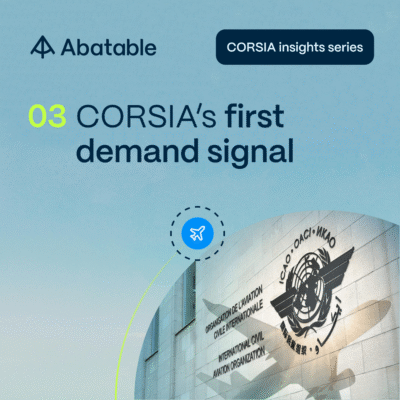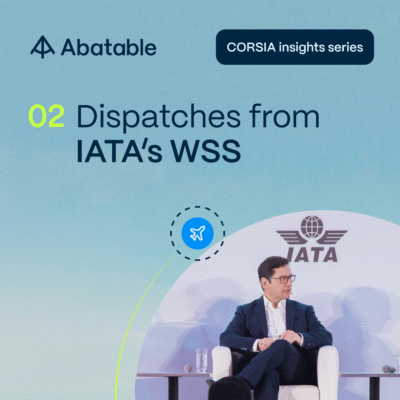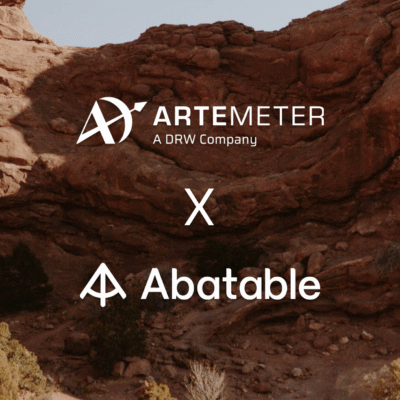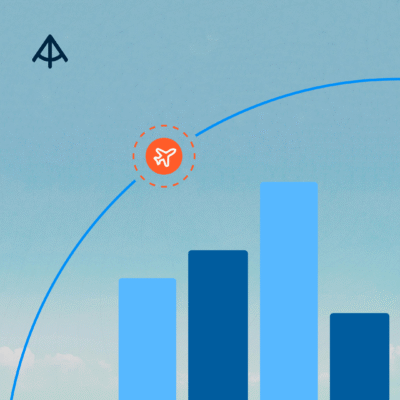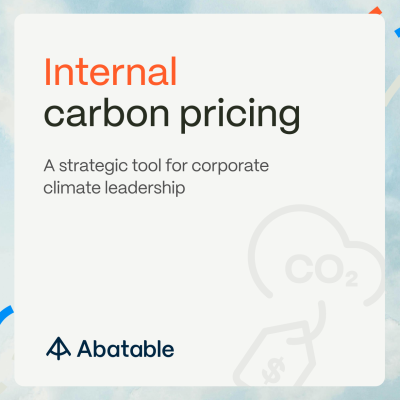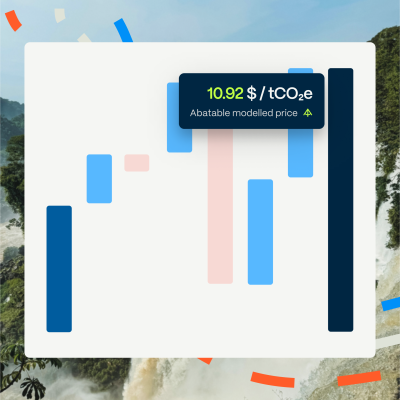The IC-VCM’s Core Carbon Principles are set to be one of the defining features of the voluntary carbon market this year as certain buyers hold tight to see which credits become CCP-approved before cementing their purchasing strategies. However, as Abatable’s Coco Chernel writes, from the methodologies submitted to IC-VCM for approval, only a small proportion of credits in the market can be certain to be blessed with a CCP label.
Following the voluntary carbon market’s rollercoaster 2023, the integrity of carbon credits as a solution to addressing climate change has been placed front and centre in the public eye and has now been pushed even further up the list of priorities for companies looking to support climate action.
Good timing then for the Integrity Council for the Voluntary Carbon Market (IC-VCM), a private-sector-led initiative focused on ensuring high-integrity supply-side claims for the global voluntary carbon market (VCM), to begin releasing the first of its long-awaited Core Carbon Principle assessments.
The Core Carbon Principles (CCPs) were born as a result of the goal of the IC-VCM’s predecessor, the Taskforce on Scaling Voluntary Carbon Markets, to increase the integrity of the VCM. They were launched in March 2023 to enforce the highest standards of ethics, sustainability, and transparency for carbon credits and supply-side claims.
The IC-VCM published its CCP Assessment Framework in August 2023, which sets out key eligibility criteria required to meet the CCPs – a label which is expected to become a new benchmark for quality in the market.
The IC-VCM has now set up a governance structure to operationalise the CCPs based on assessment tracks including an internal assessment body and several Multi-Stakeholder Working Groups (MSWGs), composed of technical experts across different carbon credit project types, such as nature-based solutions and cookstoves.
CCPs are currently being assessed at both the programme level (registries) and category level (groups of similar methodologies), with registries accounting for 98% of the market’s supply recently submitting applications for assessment.
Abatable’s analysis
Given the high level of anticipation surrounding the CCPs, before the announcement of the first approvals by IC-VCM later this month, Abatable has conducted a forecast into which methodologies have a high, medium and low likelihood of meeting CCP eligibility based on the category-level criteria set out in the IC-VCM’s Assessment Framework. The overarching methodological elements being assessed include additionality, permanence, robust quantification of emission reductions or removals, no double-counting, sustainable developments and safeguards.
Assessments were completed by Abatable’s team of methodological specialists, mirroring the IC-VCM’s assessment approach as closely as possible.
Our complete analysis, listing all assessments at the methodology level, is available within our market intelligence platform.
The focus of this article is on the implications of our forecast on carbon credit supply, answering the following questions:
- What proportion of market supply is currently under assessment for the IC-VCM’s CCP label?
- What proportion of the market has a high likelihood of passing the IC-VCM’s eligibility criteria?
- Which registries are best aligned with the criteria?
- From which project types can we expect the greatest supply of eligible carbon credits?
- How do we expect the market to react to the new label?
We provide our answers in the sections below.
What proportion of market supply is currently under assessment for the CCP label?
Methodologies covering nearly three-quarters (71%) of the historical supply in the market have been submitted for assessment, corresponding to 850 mln verified carbon credits. Once submitted, similar methodologies are grouped into categories (e.g. industrial efficiency or waste heat recovery) and assessment tracks are assigned depending on the priority or complexity of the category. You can access a list of the IC-VCM categories here.
Categories expected to be closely aligned with the CCPs will be assessed by the IC-VCM’s internal body, and represent approximately 6.1% of the market, with the first outcomes of these assessments promised to be announced by early Q2 2024. A large volume of credits (749 mln) will be assessed by outsourced teams of technical experts, or MSWGs. The publication of the outcomes of these assessments will be phased until the end of September 2024.
IC-VCM has already deprioritised 1.6% of historical issuances due to poor alignment with its Assessment Framework and 18.1% still await categorisation, with these methodologies being seen as lower priority given that they represent smaller market share, are more complex or exist as combinations and revisions.
Verra has decided to exclude a large proportion of its credits, predominantly those generated from historic REDD+ methodologies that were recently scrutinised by market participants due to quality concerns. These credits account for 26.7% of total historical issuances in the market, indicating a potential surplus that will shape future supply.
What proportion of the market has a high likelihood of passing the ICVCM’s eligibility criteria?
From the 80 methodologies reviewed, Abatable finds that only 6.4% of all historical issuances confidently meet CCP eligibility criteria1. This translates to just 3.8% (32 mln) of all available carbon credits in the market today.
We estimate that 37% of historical issuances have a ‘Medium likelihood’ of CCP eligibility. These credits are predominantly under methodologies that allow for flexible quantification approaches, whereby conservatism is encouraged but not strictly required. There is also uncertainty on how safeguards at the programme level will be considered at the category level assessment.
It remains to be seen how the ‘Medium likelihood’ methodologies will be interpreted by the MSWGs, and thus the knock-on supply implications. It is also unclear how an additional level of conservatism applied by a specific carbon project developer beyond the scope of the methodologies requirements will be considered by the market.
Methodologies deemed unlikely to meet CCP eligibility often fell short due to their inability to satisfy stringent permanence criteria, especially the case with nature-based solutions (NBS), and their failure to incorporate the three additionality tests mandated by the CCPs.
Which registries are best aligned with the criteria?
We anticipate pockets of CCP-aligned supply to come from Verra (VCS), the Gold Standard (GS), the Climate Action Reserve (CAR), as well as the REDD+ Environmental Excellence Standard (ART). Our analysis suggests that CAR has the largest percentage of high-likelihood methodologies (2% of historical issuances) but also the greatest percentage of low-likelihood methodologies (5% of historical issuances), which represents a polarising view of the registry – to be confirmed by the outcomes of the IC-VCM’s assessments.
Despite ACR and ART having obtained CORSIA Phase 1 eligibility, their compliance with the CCP Assessment Framework is not guaranteed given that these requirements are additional to CORSIA eligibility.
Abatable’s analysis focuses on issuances from the most active registries that have applied for CCP assessment. Despite having applied, Social Carbon has not been included in the analysis as the registry is yet to be issuing credits. Verra is the largest registry by the number of historical issuances, however these credits are not yet being assessed due to delays in the application phase. Consequently, we expect delays in the outcome of Verra’s programme and category-level assessments.
From which project types can we expect the greatest supply of eligible carbon credits?
Breaking down the supply of CCP-aligned credits by project type, industrial efficiency and waste management methodologies generally have the highest likelihood of being approved. This is because they tend to have less risk associated with reversals and emissions are generally more quantifiable.
We find that most NBS projects have a low likelihood of CCP eligibility. This is predominantly a result of strict permanence requirements for biogenic reservoirs, including a 40-year monitoring and compensation period (which is currently typically 20 years for Verra) as well as a 20% buffer pool allocation.
We also find the majority of credits scored as ‘Medium likelihood’ are generated from renewable energy and cookstove and household devices methodologies. Uncertainty in these assessments is driven by questions about the efficacy of positive lists – a way to demonstrate additionality – to meet the CCP requirements. Beyond Verra, other methodologies submitted within the REDD+ category also seem to perform poorly against the Assessment Framework, indicating the need for more stringent quantification and reversals-mitigation to ensure the long-term success of this project type.
How do we expect the market to react to the new label?
It’s important to note that the analysis presented in this article is predominantly based on historical issuances and does not represent projected supply, which is already shaping up in the form of newer, more stringent methodologies better aligned with the CCPs.
For example, we predict that the Gold Standard ‘Methodology for Metered & Measured Energy Cooking Devices’ has a high likelihood of CCP eligibility, but given the first credits issued under the methodology came to market in 2023, it does not account for a large percentage of historical issuances. However, looking at the number of projects now registered with the methodology, we see the potential for large volumes to be generated.
A two-speed market
Whilst the first CCP labels will be rolled out by early Q2 2024, the remaining outcomes of the IC-VCM’s assessments will be phased until the end of September. In the interim, we expect to see demand favoured towards CCP-labelled credits given they represent a greater assurance of high integrity.
As a result, we expect to see price bifurcation in the short term, particularly seen through a decline in REDD+ pricing, as a market moves to operate at two speeds – a concept we discuss in depth in our Voluntary Carbon Market Developer Overview | 2023-2024.
At Abatable, we will continue to monitor the IC-VCM’s progress and forecast the CCP eligibility of newly categorised methodologies.
The full list of methodologies we have scored is available through our market intelligence platform. Schedule a demo with a member of our team or learn more by emailing [email protected]
1 This is subject to change as more methodologies, currently ‘uncategorised’, are put forward for assessment beyond Q2.







